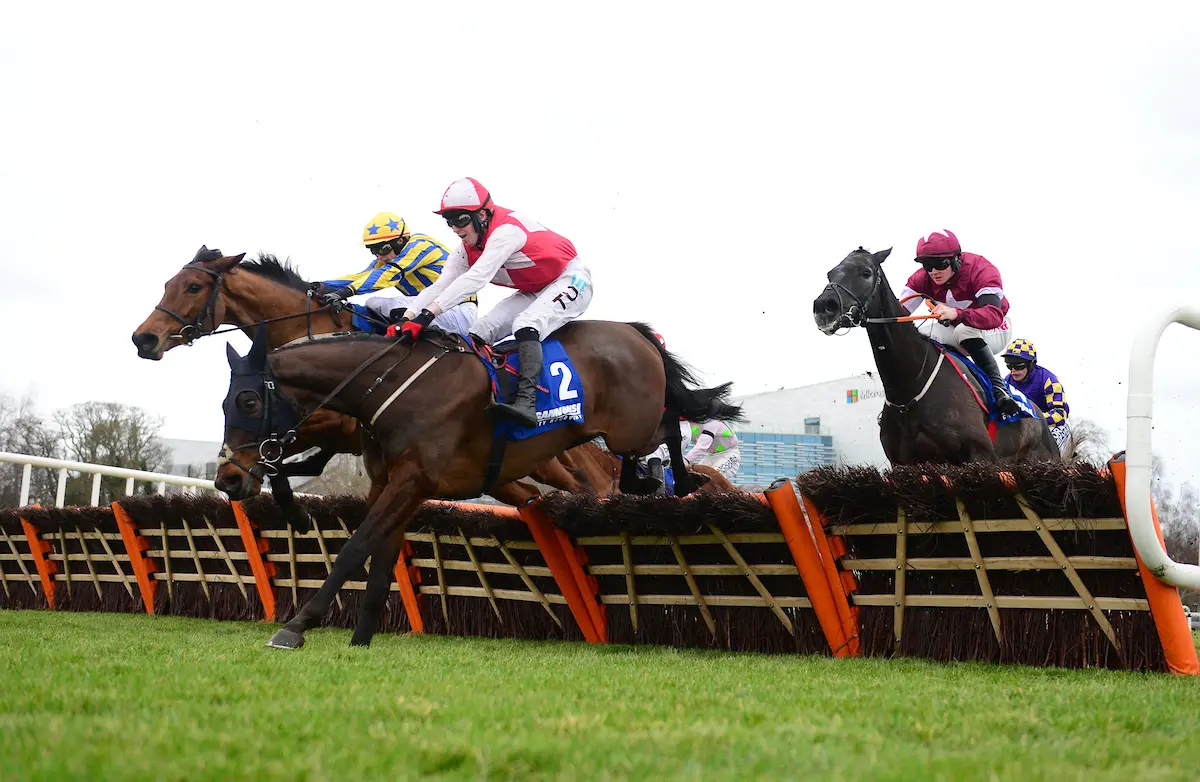Matt Tombs: keep this 66-1 chance in mind for Champion Chase
By Matt Tombs
Last Updated: Fri 28 Feb 2025
With the Dublin Racing Festival (DRF) now such a huge event in the Jumps racing calendar, in its aftermath the question is how do we understand its impact on the Cheltenham Festival and so exploit mispricing in the markets?
Whether like me you love the challenge of finding ante-post bets that go off a fraction of the price on the day or prefer to do your betting post-declaration once you have all available information, understanding the impact of DRF is crucial.
There are four main questions about DRF, which we need to consider when looking forwards to Cheltenham:
1 How did the ground ride at Leopardstown?
2 What proportion of their best Cheltenham hopes do different trainers bring to DRF?
3 How much do different trainers horses improve from DRF to Cheltenham?
4 Which of the DRF races are the most important guides to Cheltenham?
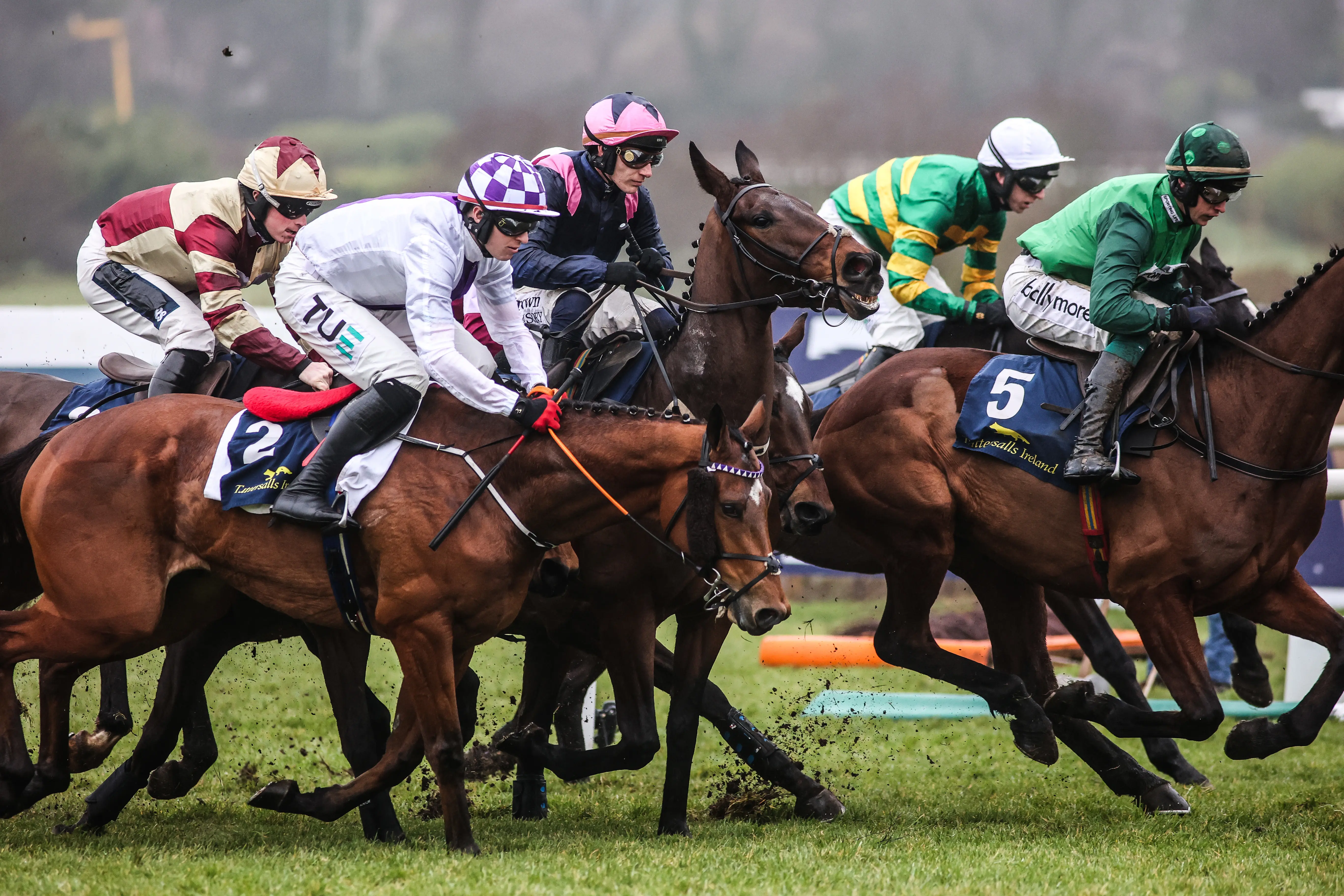
1. How did the ground ride at Leopardstown?
The number of Cheltenham winners DRF has produced in each of the seven meetings is, most recent last: 8-2-3-11-5-8-11.
The main reason these numbers differ so widely is the ground at Leopardstown, which has varied a lot.
There were well-documented issues with fast going in 2019 and 2020, which led to lots of the top horses not running. Al Boum Photo, Any Second Now and Sire Du Berlais were all declared and then scratched before winning at Cheltenham and there were probably others who might have run had the ground been slower at Leopardstown.
Willie Mullins dominates DRF and many of his horses like testing ground. It is therefore not surprising that the DRF races on slower ground have produced a disproportionately higher percentage of the Cheltenham winners.
This is set out in the grid below, (the numbers are all DRF runners not just the Mullins horses).
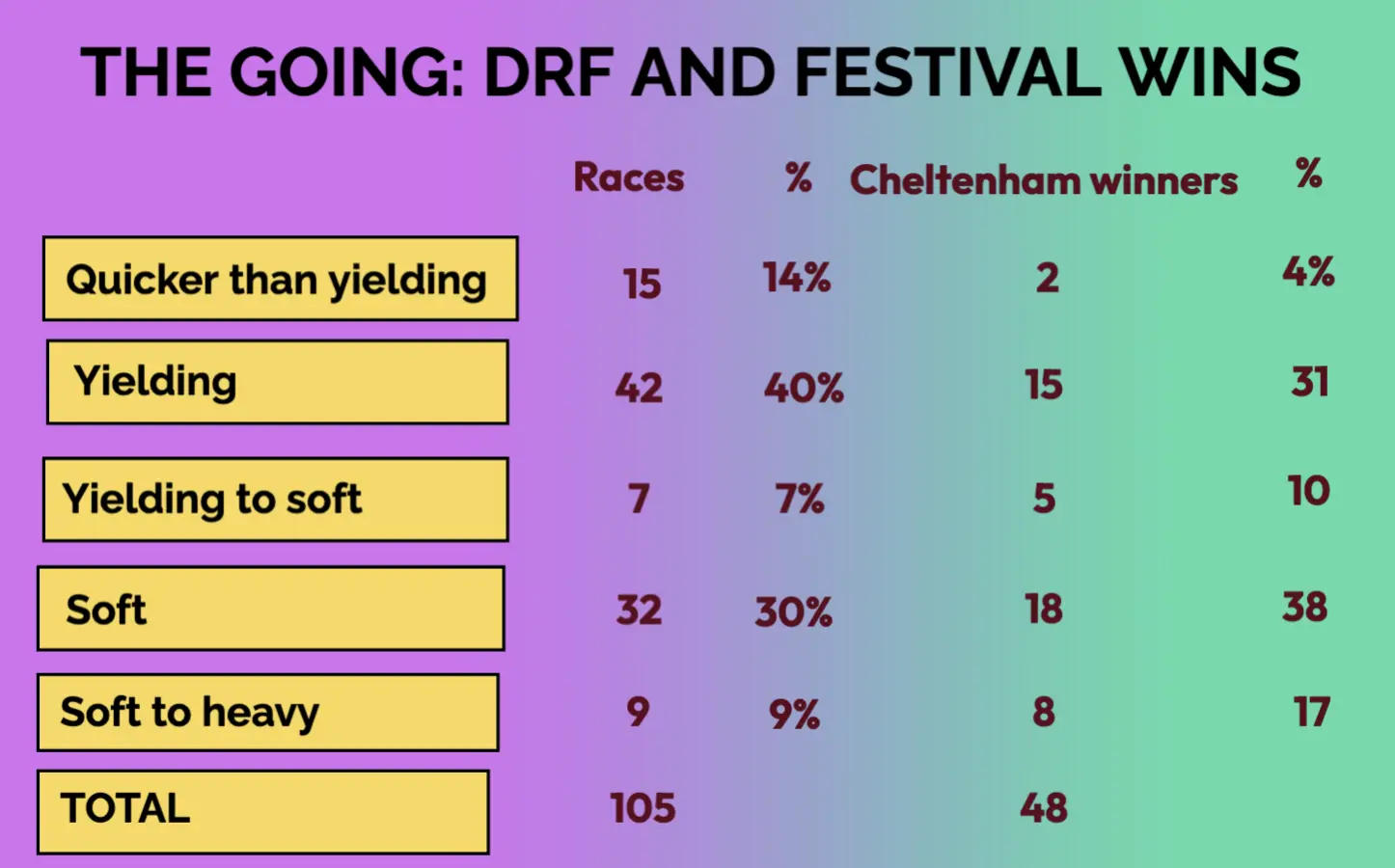
Mullins generally runs more of his best horses at DRF when the ground is slower. At the three DRF where the ground has been testing, (2018, 2021 and 2024,) 64% of his Cheltenham winners ran at DRF.
At the other four DRF, mainly run on a sound surface, that percentage drops to 37%.
The ground is often slower on the hurdles track but there was a greater disparity between the hurdles and chase tracks this year. The ground was officially soft on the hurdles track and looked to ride accordingly. On the chase track it was officially yielding but the times were quite quick, (both the Irish Arkle and Dublin Chase were under standard.)
There seemed to be no complaints about the going and when there’s a high-water table and the ground has dried out on top you can get what some of us call perfect jumping ground – horses let themselves down on it and run fast times. That may have been the case on the chase track.
I would therefore be expecting the DRF hurdles race to yield plenty of Cheltenham winners and I’d be optimistic the chases could too.
2. What proportion of their best Cheltenham hopes do different trainers bring to DRF?
I have heard it said that Henry de Bromhead does not prioritise running his best horses at DRF.
But as the grid below shows, of the biggest trainers, de Bromhead has the highest proportion of Cheltenham winners who ran at DRF.
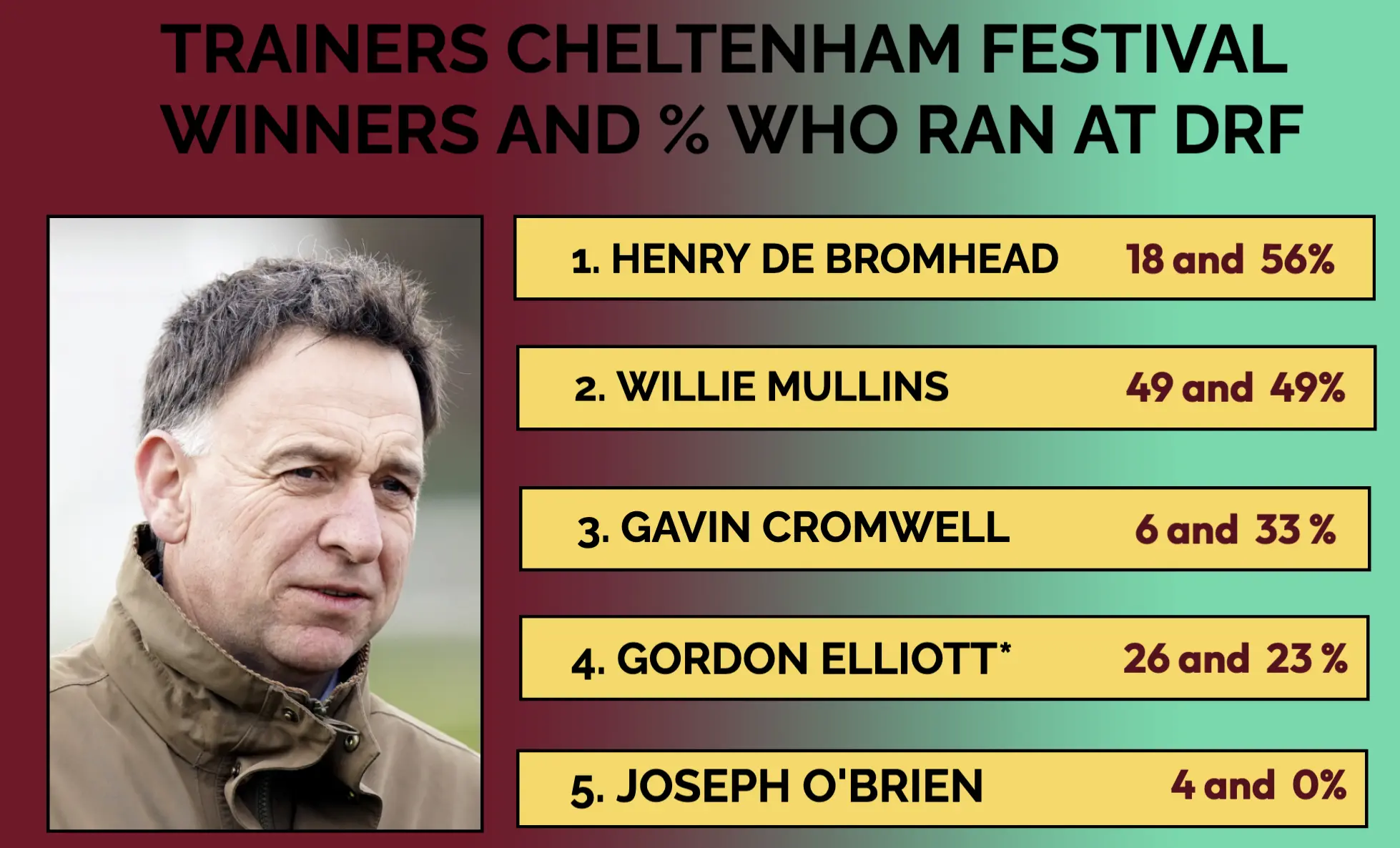
*no runners in 2021.
It is Gordon Elliott who tends to bypass DRF with a lot of his main Cheltenham contenders.
Typically, having got his horses going earlier, he often freshens them up instead of running them at the meeting.
Brighterdaysahead, Romeo Coolio and The Yellow Clay are among Elliott’s main Festival hopes this year – they all missed DRF and go straight to Cheltenham.
He also favours keeping his Cheltenham handicap projects away from the bright lights of the DRF. Elliott has had seven handicap winners at the past six Cheltenham Festivals, none of which ran at DRF.
Elliott was 0/26 at the meeting this year, his shortest price runner being He Can’t Dance (3/1) in the bumper for colts and geldings. There was very much a feeling that he was keeping his powder dry for Cheltenham.
Similarly, it is noteworthy that none of Joseph O’Brien’s four Festival winners, (two each in the Fred Winter and Martin Pipe,) ran at DRF. I would imagine O’Brien’s will continue to prep his Cheltenham handicap projects elsewhere.
3. How much do different trainers horses improve between DRF and Cheltenham?
To illustrate this, I have analysed the five novice/juvenile Grade One races at DRF as such young, unexposed horses are those that should best illustrate how much improvement a yard gets between DRF and Cheltenham. I’ve looked at two different ways of measuring this.
The first is simply the percentage of those runners that record a higher Racing Post Rating at Cheltenham than at DRF:
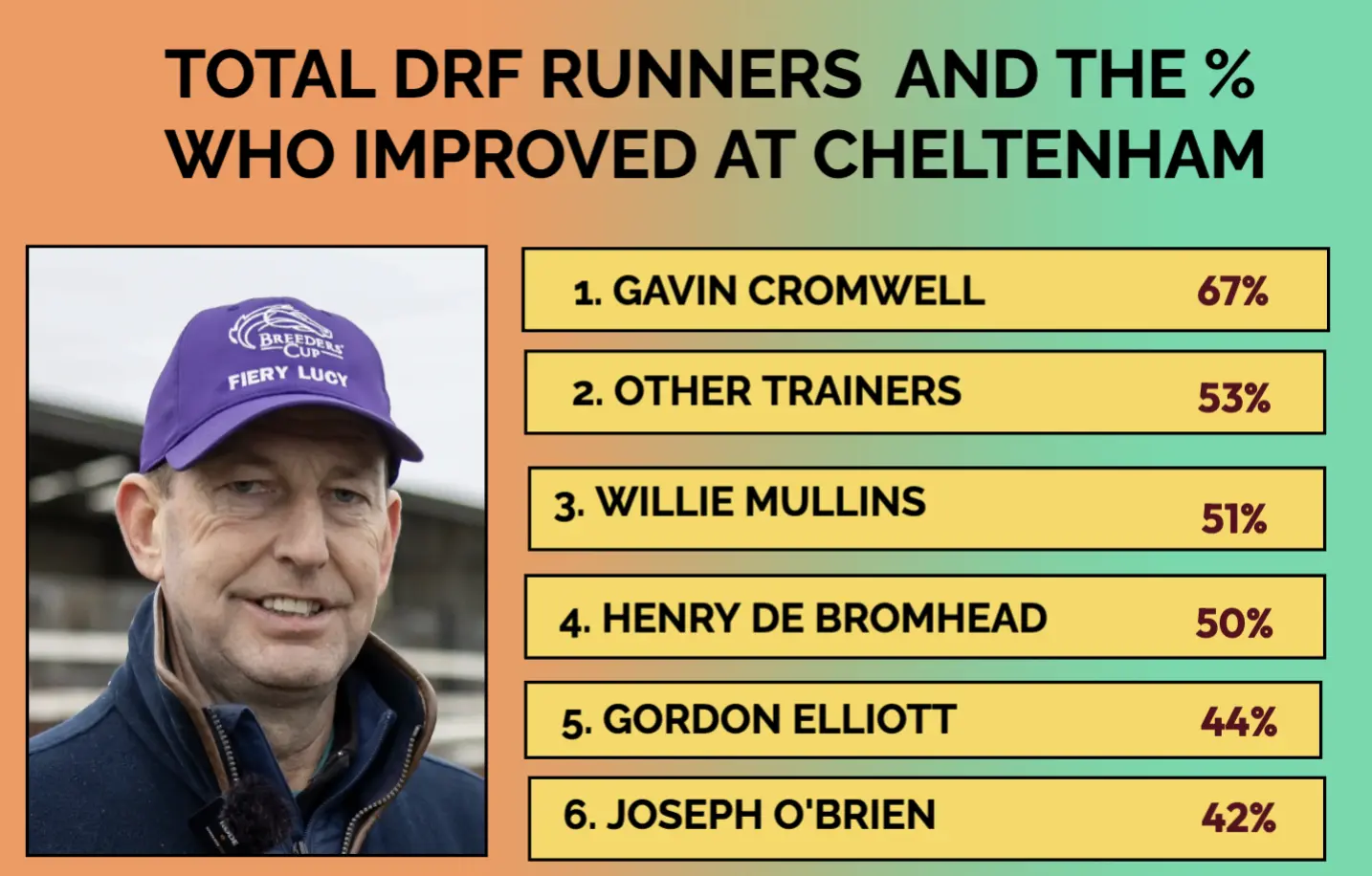
I have included an ‘Other Trainers’ category here, which is hopefully a useful benchmark.
The second is to look at the average improvement of their Cheltenham novice/juvenile winners who ran at DRF.
The samples are too small other than for Mullins and Elliott – but unsurprisingly given Mullins’ spring focused training method, his Cheltenham winners improved an average of 8.9lb from DRF to Cheltenham, whereas Elliott’s improved an average 7.6lb.
With Mullins’ novices having run even less than usual this season, I’d be expecting more than average improvement this year – if you spot a Mullins novice that you think has star quality but has a bit to find on form, I wouldn’t let that put you off them at Cheltenham.
Of the other trainers, I’d treat the Cromwell stat with some caution. His can be a streaky yard – for example, his horses were right out of form at DRF in 2021 when Vanillier bombed out but returned to form just in time for him to win the Albert Bartlett.
Other than for Cromwell, the figures show that there is not that much between the different trainers in terms of how much their horses improve between DRF and Cheltenham. Yes, the Mullins horses do improve more than Elliott’s as you would expect given their training methods - but it’s slightly more, not hugely more and the stats are virtually identical for the Mullins and De Bromhead horses.
That said, a key point from this year’s DRF is the form of the De Bromhead yard. After a good Christmas, De Bromhead is 2/64 in 2025 at the time of writing.
Of his nine DRF runners, only Monty’s Star finished within 20 lengths of the winner – and his 7¾l fifth in the Irish Gold Cup was in a steadily run race where the beaten horses finished in a bit of a heap. If the yard is back in form by Cheltenham, some of the De Bromhead DRF runners could be underestimated.
4. Which of the DRF races are the most important guides to Cheltenham?
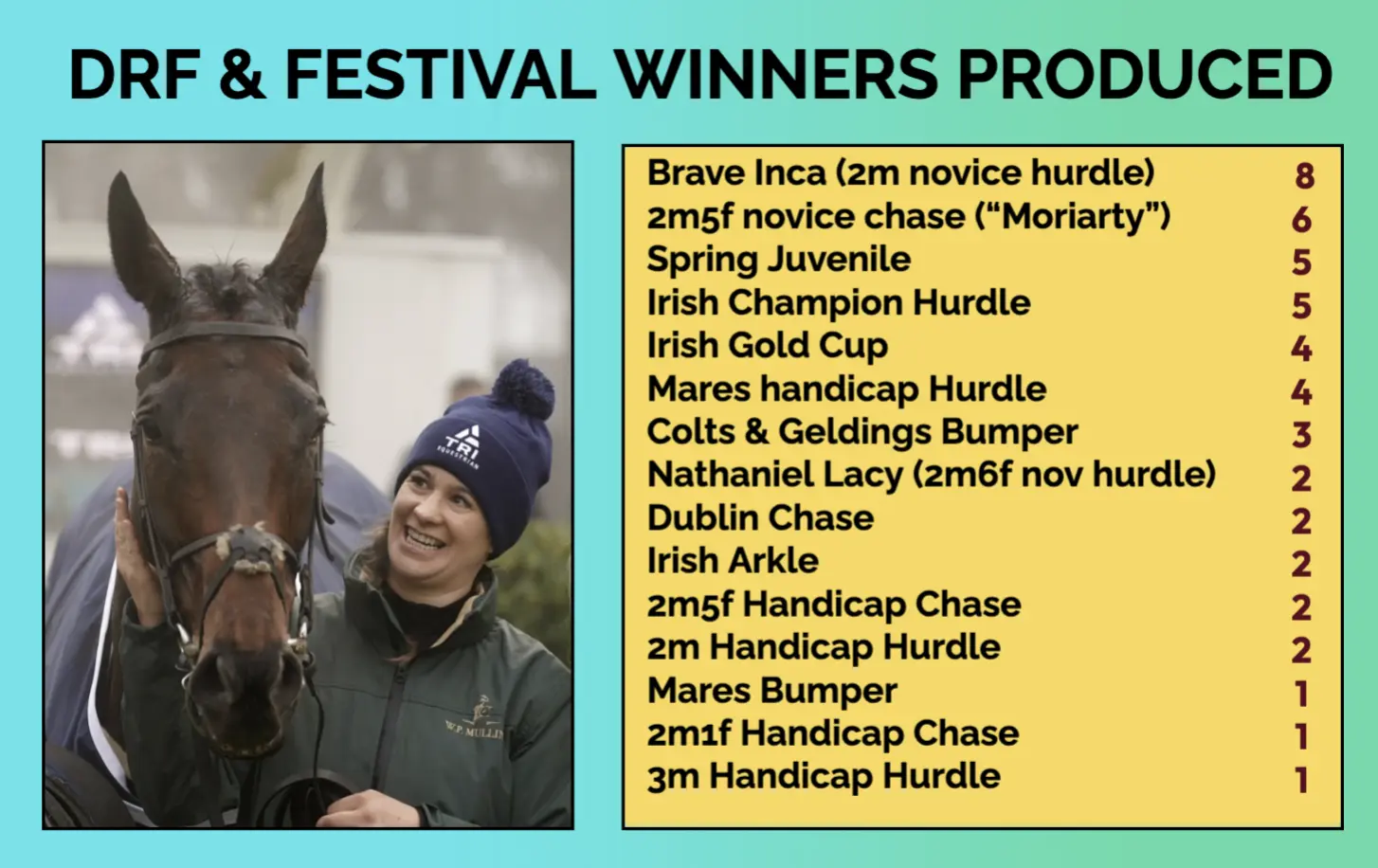
All 15 have produced at least one Festival winner, the grid above setting the numbers out.
As with everything at DRF, it’s quite small samples but most of these races existed before it was founded so we have a decent history to look back on. I have picked out four specific DRF races to focus on with Cheltenham in mind.
The Brave Inca is top, producing more Festival winners this century (14) than any other novice hurdle. They include seven Supreme winners and five winners of what is now the Turners (Baring Bingham) Novice Hurdle.
Until DRF, the Brave Inca was run over 2m2f and it is now a 2m race, (since when it has produced three winners of both the Supreme and Turners).
It makes sense that the Brave Inca is such a strong race as it is the perfect time to funnel the best Irish novices for the Supreme and Turners together, (although the Turners is run over 2m5f it’s typically steadily run and a test of speed at the trip). That’s especially the case now with Mullins’ best novices often not having won their maidens to contest the Grade Ones before the turn of the year.
I would expect the Brave Inca to continue to be an excellent guide and there was a real wow factor about this year’s winner Kopek Des Bordes. Mullins nominated the Supreme after the race and that is the more likely target - but Ballyburn and Sir Gerhard looked to be heading for the Supreme after winning the Brave Inca and ended up in the Turners.
Kopek Des Bordes and Final Demand look Mullins A-teamers in the Grade One novice hurdles but who the third A-teamer is could prove crucial to which races they all run in as Mullins does like to split his best novices up. Whether Kopek Des Bordes runs in the Supreme or Turners at Cheltenham, he looks banker material.
The 2m5½f novice chase (the “Moriarty” in old money) is next on the list with six winners in the DRF era, 11 in total since it became a Grade One in 2002.
Although run at an intermediate trip it serves as a reminder that at novice level, the top performers are often flexible as to trip – their class advantage enabling them to win Grade Ones at quite different distances, in a way fewer horses can in open company.
Staying novices often step up in trip gradually as the season progresses and this is mainly a trial for the Broadway, having produced six winners, two of which did the double in the DRF era.
However, it has also produced two Arkle winners from just eight runners this century. For those wondering if this is a race for intermediate trip specialists - during the 14 years the 2m4f Grade One Turners existed at Cheltenham, all 14 runners from this were beaten in it, including six Moriarty winners.
This year Ballyburn quickened away from Croke Park on the run-in off a steady gallop. Ballyburn has lots of class and looked happier jumping at this gallop rather than going a Sir Gino pace. He is bred to be better suited by 3m but is a keen going type and I would be open-minded about whether the test of the Broadway will suit him. He looks a bit short in the betting.
Croke Park is probably the most under-rated novice chaser around. Having already won the Grade One Fort Leney over 3m at Christmas he could improve again for stepping back up in trip if he goes to Cheltenham and has a chance of turning the tables.
The Spring Juvenile, this year run as the Gannon’s, dwarfs all other trials for the JCB Triumph Hurdle, having produced nine winners since it became a Grade One in 2010 and four in the DRF era.
You might expect juveniles, given their youth, to progress more on average during the season than older novices – and often they do so at different stages during the season as they develop physically. With fewer of the best juveniles being battle-hardened from lots of racing on the Flat now, (20 of the 23 Triumph winners between 1990 and 2013 began on the Flat, only five of the 11 since did), that should be an even bigger factor.
That’s important when assessing the Spring form, with six of those nine Triumph winners beaten at Leopardstown. It may only be 41 days between the races but that can be a long time in a juvenile’s development, so don’t discount the beaten horses in the Spring.
Hello Neighbour is very likeable and is now 4/4 in two Flat runs and two hurdles starts. He’s rightly the shortest of the Irish horses in ante-post markets for the Triumph but ¾l second Galileo Dame looked to be ridden to run well here with the future in mind. She could be another beaten horse in the Spring to turn the tables in the Triumph. She looks too big a price with the markets priced on the basis that there is a high chance that the Spring form will get confirmed in the Triumph.
The Nathaniel Lacy is sometimes described as a poor Albert Bartlett trial as all five winners to have run in the Albert Bartlett were beaten. However, they have finished 52223, which, given that ten of the past 11 Albert Bartlett winners have gone off double-figure prices in an average field size of nearly 18, is a decent record.
If Mullins sticks with Plan A and Final Demand runs in the Turners, the others, all beaten at least 12 lengths, ought to be big prices in the Albert Bartlett. The outsiders that keep winning the Albert Bartlett are often defensively priced ante-post and are bigger prices on the day, so it is usually worth holding fire at this stage.
Despite having had five hurdles starts and now qualifying for the Festival handicaps Gordon Elliott said Wingmen will go for the Albert Bartlett. He is one to consider in what looks a typically wide-open renewal.
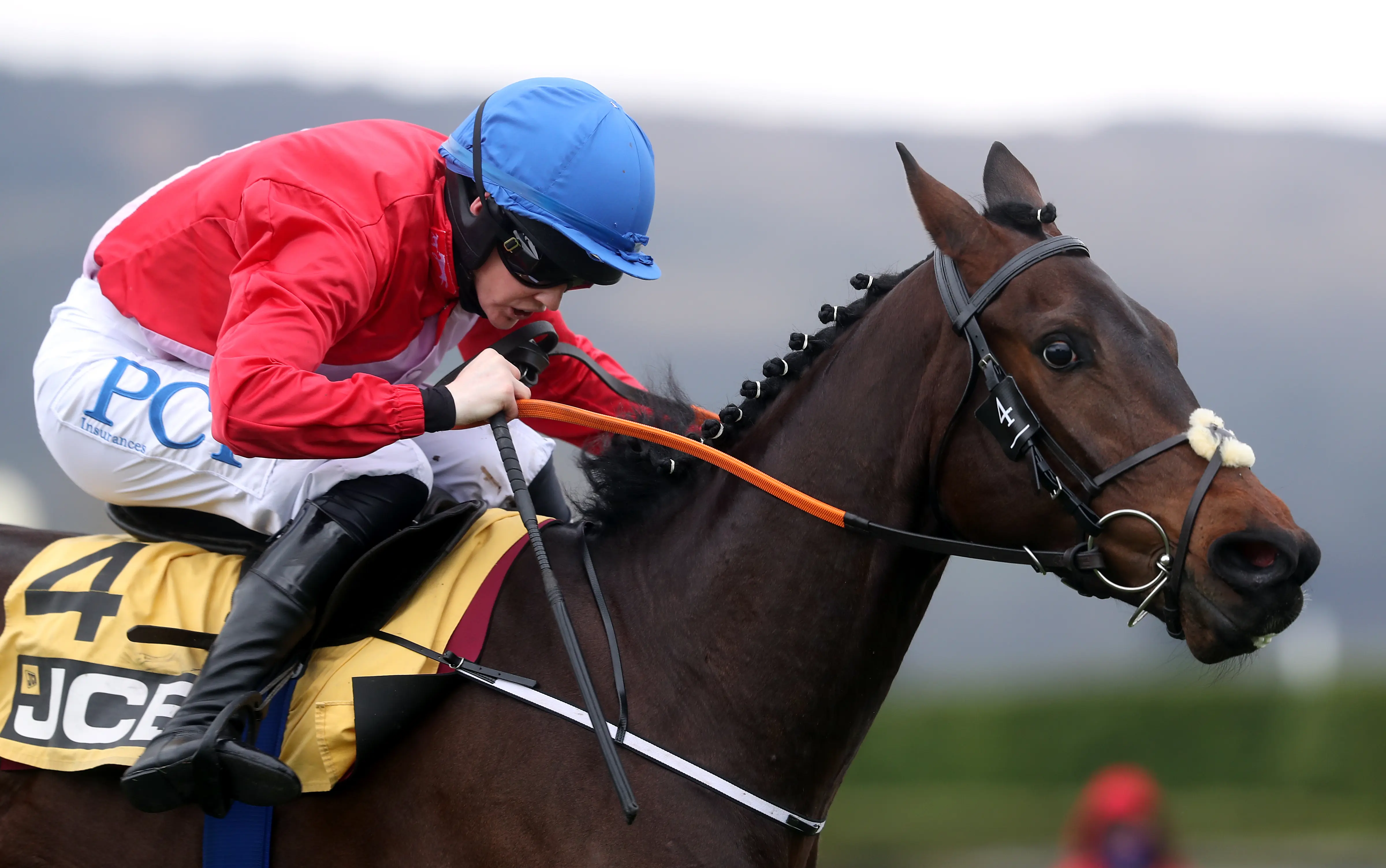
Quilixios is quoted at 66-1 non-runner-no-bet for te Champion Chase
The DRF has been the biggest source of Cheltenham clues in recent years and that looks likely to continue with the Brave Inca, Spring Juvenile and Moriarty key DRF races to focus on.
It may be even more the case this year with the markets in the Supreme, Baring Bingham, Triumph and Broadway so embryonic going into DRF. Whilst the winners have obviously shortened, it may well be that they have not yet shortened enough. For example, I could see Kopek Des Bordes going off odds-on in whichever race he runs in. If you fancy some of these DRF winners, especially the novice winners, now could be a good time to back them – with plenty of non-runner-no-bet available.
With De Bromhead historically running a high proportion of his Cheltenham winners at DRF but the yard being out of form at the meeting this year, there could be value about some of those horses if the stable is back in form come March.
Quilixios easily beat Marine Nationale conceding him 4lb at Naas and was then a fair eight-length second to Jonbonon testing ground in the Tingle Creek. If you put a line through his Dublin Chase run because of the yard form, he has each-way prospects in the BetMGM Queen Mother Champion Chase.
He is available at 66/1 non-runner-no-bet, which would look good each-way value as soon as you were convinced the yard was over their mid-season cold spell.

Copyright 2025 Racing TV - All Rights Reserved.
Please bet responsibly
Copyright 2025. All rights reserved
